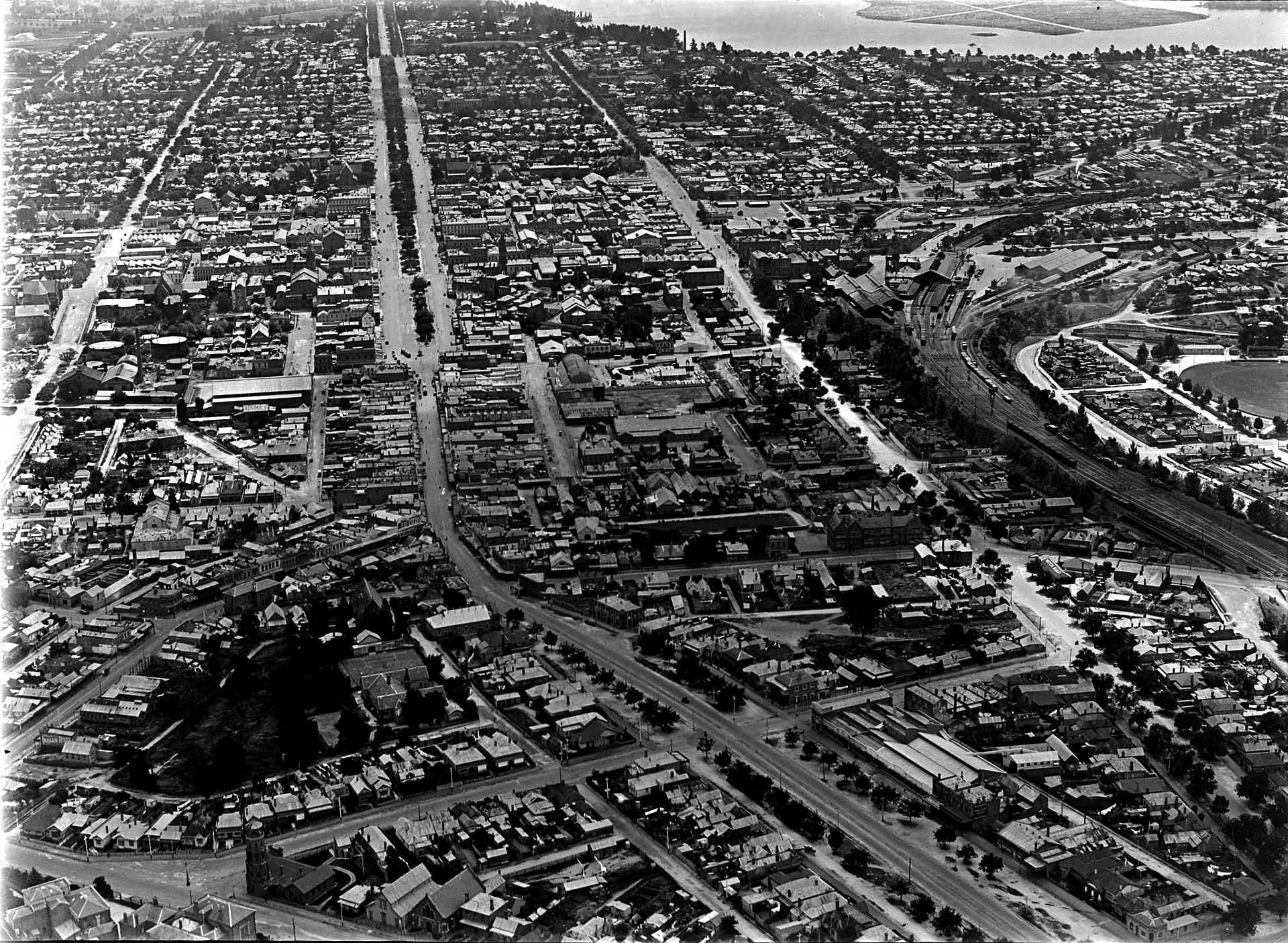SongWays Sacred Places
.jpg) |
| Clockwise from top right: Central Uniting Church, 103 Lydiard Street; Ballarat - Chinese Joss House, VPRS 10516/P3 Unit 2 Source: PROV; Ebenezer St John's Presbyterian Church; Ballarat Synagogue; The Meeting Tree, Buninyong |
Across the world, is there a culture of people who do not use music to make a connection with the divine?
Whether it be in joy, sorrow or wordless moments of sublime or spiritual exaltation, we use music to share our deepest emotions and connections. Music shapes our architecture through significant meeting places, whether they are corroboree trees, synagogues, churches, temples, concert halls and theatres – and for secular gatherings: pubs, homes and outdoor spaces. Ballarat has a hugely multicultural musical heritage woven through sacred spaces across the city, some extant, some lost.
For the Traditional Owners of the land in the Ballarat area, music makes vital sacred connection by invoking spiritual ancestors; used in initiation, lullabies, healing, death, fertility and to unite people. Popular instruments being possum skin rugs (played by women over their knees to make a drum), all sorts of 'clap sticks' including boomerangs and spears as percussion instruments, voice (including a women's vocal technique called ululation) and the artful use of leaves fixed to the lower limbs employed as musical instruments. The first corroboree in over 150 years was performed at Sovereign Hill in 2016.
.jpg) |
Line image of Corroboree of Victoria Aborigines "A Corroboree" Source: Ballarat Heritage Services Picture Collection
Did you know that one of the oldest operating synagogues on the mainland – and once regarded as having the most orthodox congregation in Australia – is in Ballarat? Traditionally in synagogues, Hebrew chants led by a cantor are used to deepen the prayer experience and possibly originate as a memory aid for religious texts in preliterate times. Early records show original Ballarat compositions being performed on harmonium here for the opening of the synagogue in 1861.
.jpg)
Ballarat Synagogue, Source: Max Harris Collection, Ballaarat Mechanics' Institute
Impressively, Ballarat East had up to five joss houses (temples) and at least one concert hall (recorded 1855). The style of music played in the gold rush years was the pentatonic music of the Cantonese Operas 'used to convey messages of morality and ethics'.1 Astoundingly, musicians were expected to memorise over 300 operas. Instruments included voice, 2 stringed bowed instrument (erhv) 3 stringed plucked instrument with a long neck (sanxian), and wind instruments included horn (suona) and bamboo flute (dizi), which the miners carried with them on their journey.
.jpg) |
THE CHINESE PAGEANT. (1886, June 1). The Australasian Sketcher with Pen and Pencil (Melbourne, Vic. : 1873 - 1889), p. 81. Retrieved June 15, 2017, from http://nla.gov.au/nla.news-article63224884
The Ballarat Star reported in 1856 that over 2000 people attended the Chinese Feast of Lanterns at the Charlie Napier Theatre. Here's what was published in anticipation of the event: 'The Room will be brilliantly illuminated with 3,500 mandarin lights; also revolving Ching-hairs, Dragons &c &c. The celebrated Chinese musicians O-Wai and A-Fou! Principal Musicians to the O-ho of Thibet Lassa will perform solos, duets, &c., during the evening, on the Kai-Pi and the Hul-muc... This is the Greatest Treat of the season!'
Churches had their beginnings in open air services, followed by tents, then small wooden structures, which were soon usurped by the magnificent buildings we see today. These were a focus of English, Welsh, Irish, Scottish and German worship – choral music being the central feature. Church organs, initially imported from England, were also a big hit. Ballarat continues the organ tradition to this day with their long-running annual Organs of the Ballarat Goldfields Festival.
'As the settlement became more established, there were increasing opportunities to experience opera and choral music. The extent of this type of music, and the value attributed to it in contemporary writings, reflect a human tendency to reach beyond the horizons of the immediate world. People wanted the special moments music could provide, and much effort and money was devoted to creating appropriate venues that would enhance those experiences. Within the developing city a number of sites emerged that, whatever other functions they performed, were also gateways to the “other”. Theatres, halls and churches were places where people could leave behind their everyday worlds, while their distinctive designs, dimensions and material structure helped to mould the music they encompassed, and added their own elements of sight, smell, and even touch to the total experience'.2
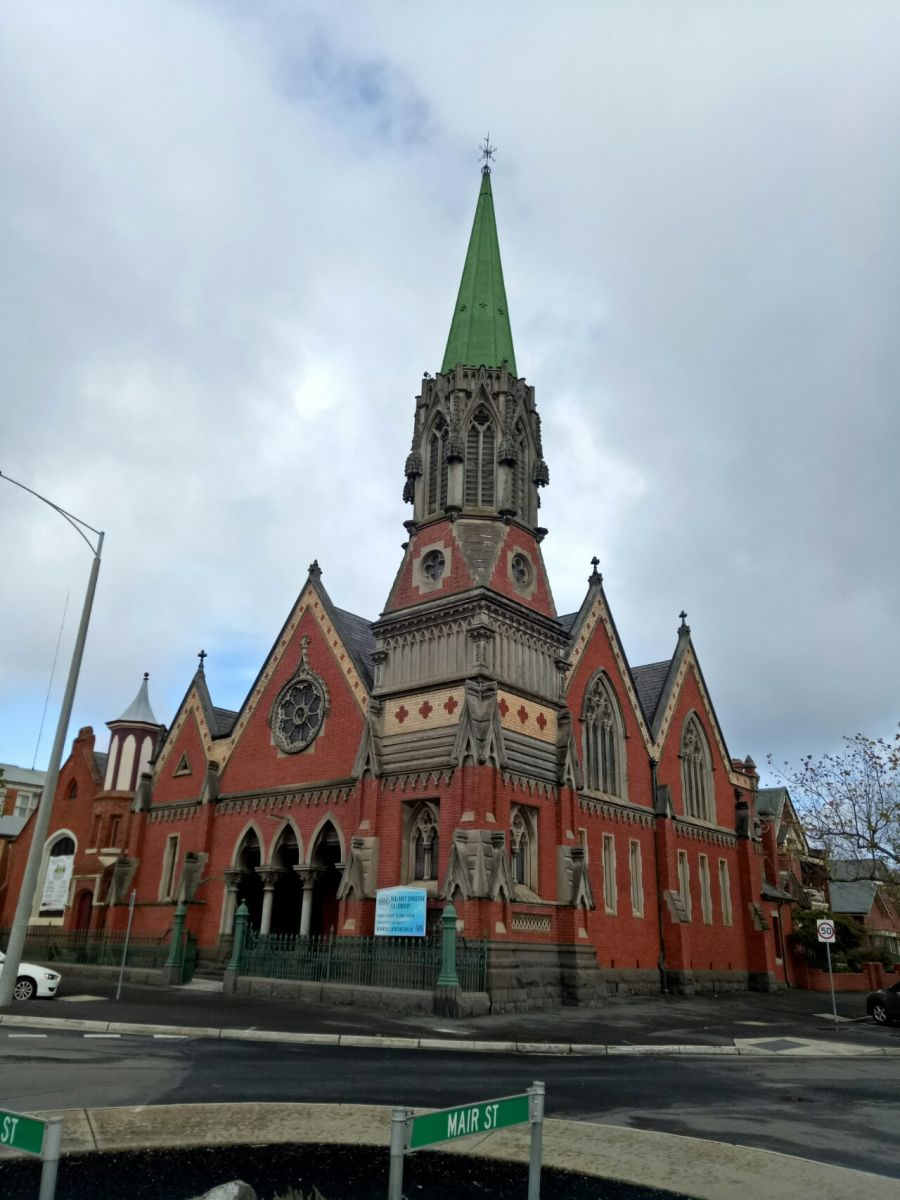 | 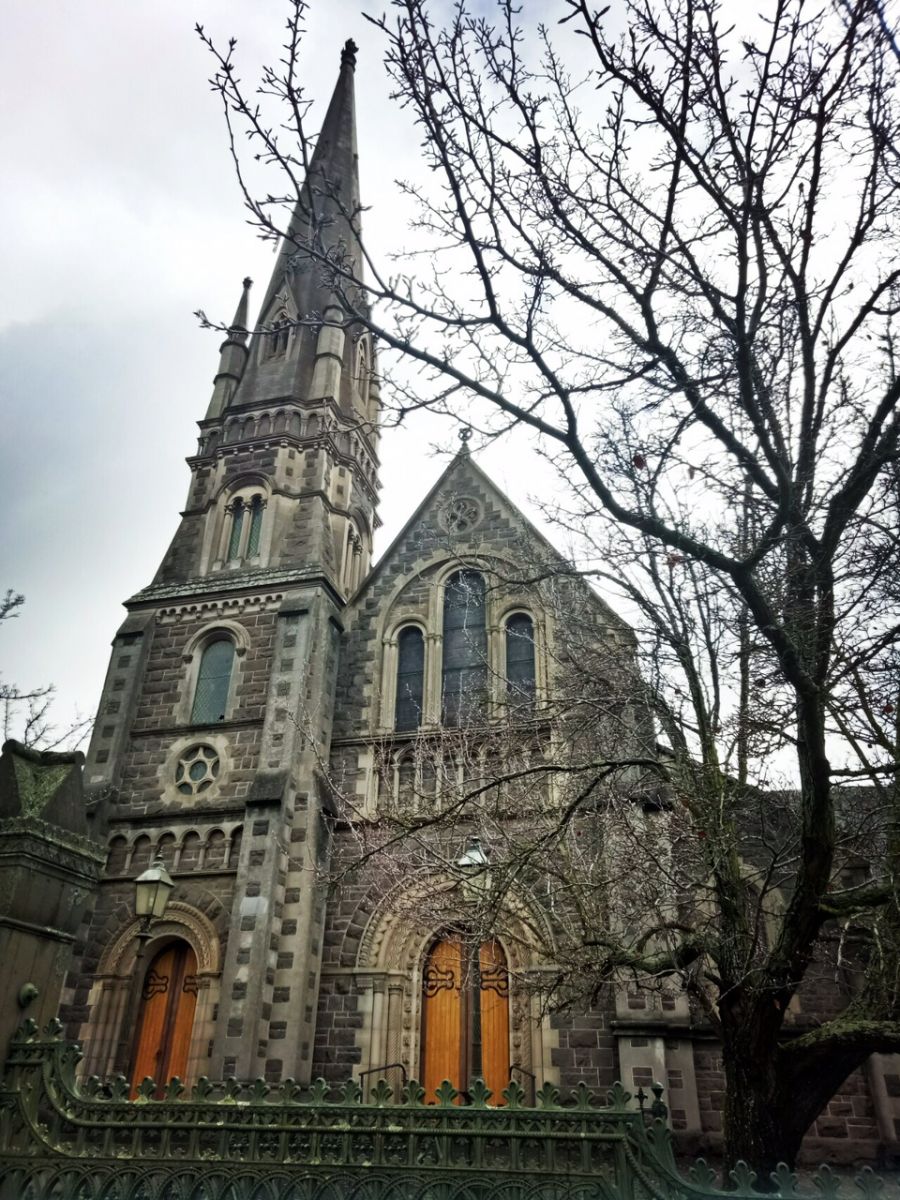 | 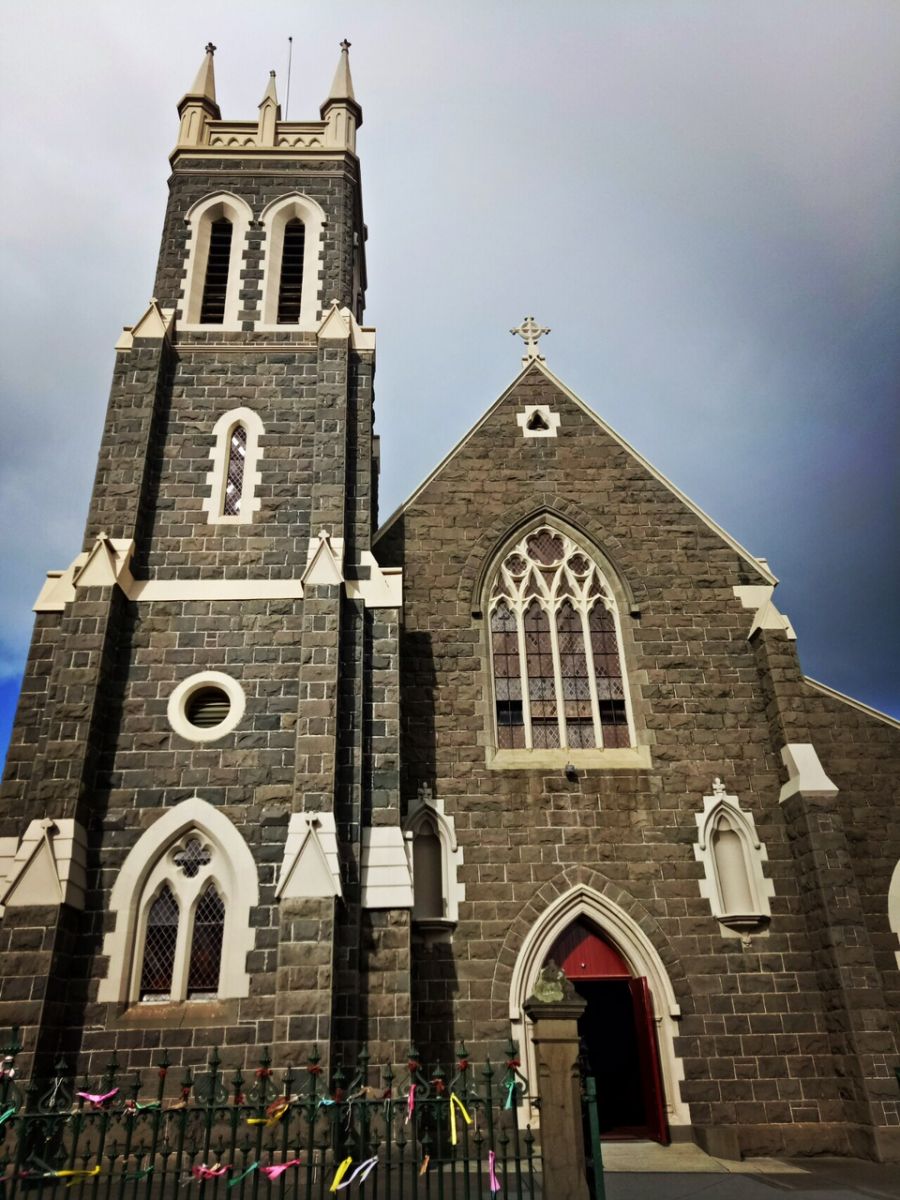 | 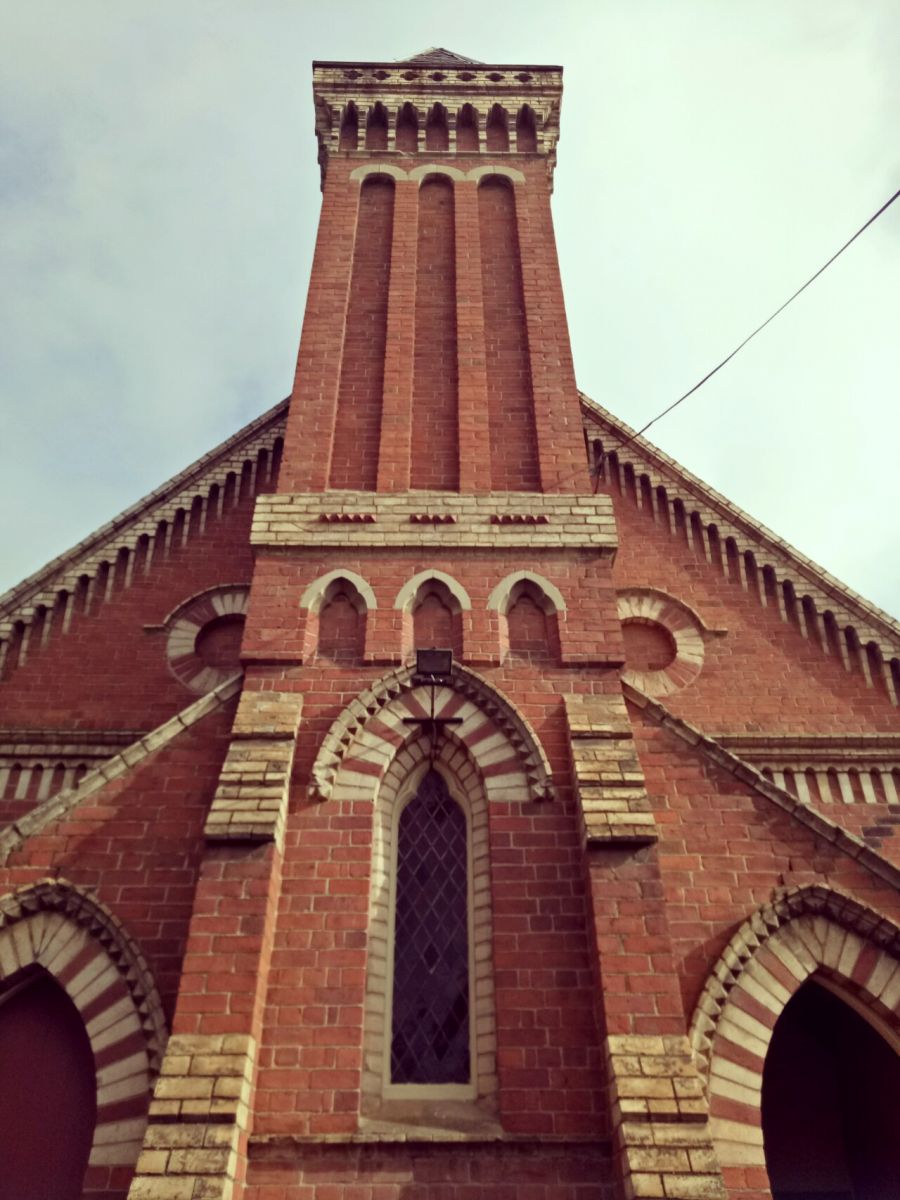 |
Ballarat Christian Fellowship Church; Ballarat Central Uniting Church; St Alipius Presbytery; Lutheran Church
Here's a little glimpse into gold rush Christmas, Ballarat style. As well as pantomimes, operettas and brass band performances on Boxing Day, 'The traditional choral work at Christmas was Handel's Messiah ... Before the Messiah on Christmas Day 1868 it was said that "the performance of this sublime work on Christmas night is now an institution, and attendance thereupon reckoned a duty". Apparently there were many dutiful people living in Ballarat that year for although it was held for the first time in Alfred Hall [capacity 5000], the crowds were so thick that there was not room for another person to gain admission, whether to “sit, stand, or lean”. Nor did the numbers show any sign of abating, for when on Christmas night in 1871 the Harmonic Society presented Samson, the Courier estimated the attendance at around 2,500 people.' 3
Singing in Ballarat has been, and still is, big – very big. The Philharmonic Society (est. 1858) and later the Harmonic Society (est.1863) were the first major choral groups and they set the standard high.
click on images to enlarge
.jpg) | .jpg) | .jpg) |
Ballarat Harmonic Society, Grand Christmas Concert 1872; The Messiah Civic Hall 1965; The Messiah, Theatre Royal, Good Friday 1871 Source: Ballarat Historical Society
Many choirs followed suit. Up until the 1950s live music was prime entertainment and social engagement for both audience and performers, and when it came to supporting Ballarat choirs in choral competitions, fervour appears paramount to an AFL grand final. 'Year after year the Courier would describe what came to be a characteristic scene, as thousands of people sought admission, to the Coliseum or, in earlier years, to the smaller Alfred Hall: "Last evening... thousands sought admission in the spacious Alfred Hall, and many were disappointed in their endeavours to get even a glimpse of the competing choirs. As a last resource crowds surrounded the big hall on the exterior, and eagerly harkened unto the voices of the vocalists within. So strenuously did the would-be auditors battle for seats, or even standing room, that they almost trampled each other. There was a wild desire to get in at any cost of dignity and energy and, indeed after all, the rich feast of choral music fully rewarded the people for their pains and troubles." ' 4
Crowds in the Coliseum frequently exceeded 5000 attendees.
.jpg) |
| Inside the Coliseum, South Street Competitions, Source: Max Harris Collection, Ballaarat Mechanics' Institute |
And how did it sound? According to one chorister who sang in his father's choir in the 1930s, 'The acoustics of the Coliseum were marvellous ... You had to keep the choir under control. My father was renowned for his pianissimos – you could hear at the very back of the Coliseum a sound that was more like a whisper.' 5
In the post-war period the Ballarat City Choir, Keith Young Chorale, Ballarat Civic Male Choir, Lydiard Street Church choir, and the 'Y' (Ballarat YWCA) all took centre stage for up to fifty years in the Ballarat choral scene under the capable lead of conductors Keith Young and Amy Young, winning numerous South Street choral championships from 1950s through to the1980s.
Music historian, Anne Doggett, still remembers with great delight her formative experience hearing the Ballarat City Choir perform Beethoven's Hallelujah Chorus in the late 1950s at the Ballarat Civic Hall, 'At these concerts the stage would be full of beautifully dressed ladies, and men beautifully turned out standing in the back rows in a massive choir. Their tone was strong and clear, they were joining together and singing as one. When they started singing it was mind blowing.'
As well as many fine school, orphanage and church choirs, choral festivals, eisteddfods and senior citizens choirs (currently U3A run the Golden Voices Choir), Ballarat's choral plethora includes: The Ballarat Choral Society and the Ballarat Choral Union with their roots dating back to as early as 1906; St Cecilia Singers established in 1968 with their repertoire evolving from Renaissance and Baroque music, to Celtic songs and to more modern repertoire including works from the Southern Hemisphere and a concert featuring the 'Holocaust Cantata'; The Sounds of Sunday Massed Choir formed to sing sacred music every Sunday on local television, BTV6, during the 1970s and 80s; the recently formed Ballarat chapter of Sing Australia community choir; the Victoria Welsh Male Choir who continue the tradition of Welsh language and song in Ballarat; the Sweet Monas and Thursday Night Choir with contemporary world music repertoire; small ensemble, Vox, who tackle challenging sacred and secular works, some written by contemporary Ballarat composers; Singers of the Black Book with a focus on 16th century male acapella music. This is not an exhaustive list!
No wonder Ballarat has been referred to as 'city of song'. If you are in Ballarat you might be lucky enough to catch a performance from one of the many singing groups, perhaps in one of the original churches, a traditional theatre such as Her Majesty's or at the 1800s music shop, Suttons House of Music. Be warned though, singing in choirs may be contagious.
|
|
|
|
Video archives courtesy of Rex Hardware
'Easter Traditions' - podcast courtesy of Sovereign Hill Museums Association
1. & 2. A. Doggett , 'And for harmony most ardently we long': musical life in Ballarat 1851 - 1857
3. A. Doggett, Harmony on the Goldfields: Music and identity in multicultural Ballarat Victorian Historical Journal Vol 75, p51
4. & 5. K. Dreyfus, Choral Competition in the 'City of Song' SING OUT Vol 14, No 3. Sep 1997





